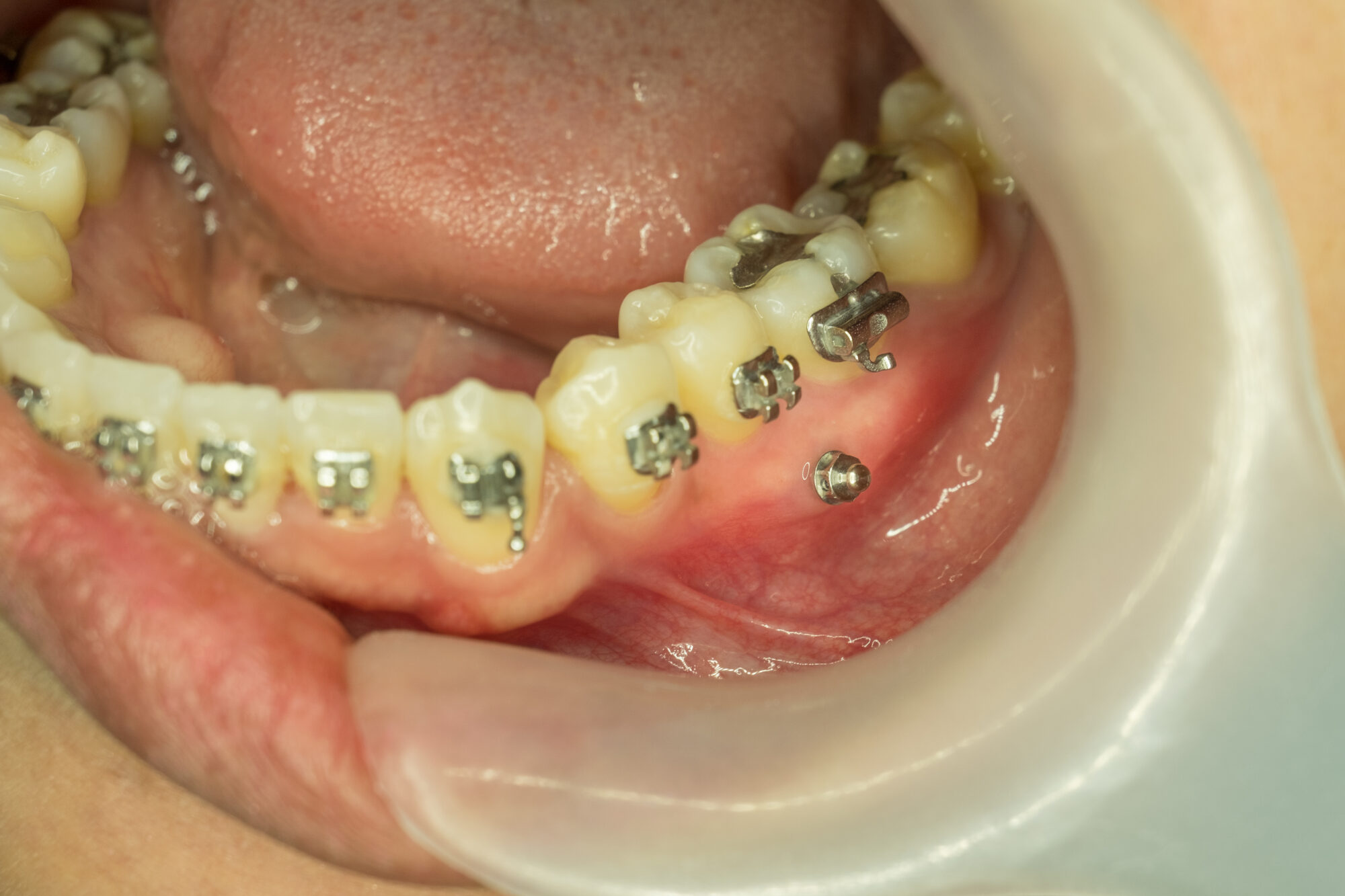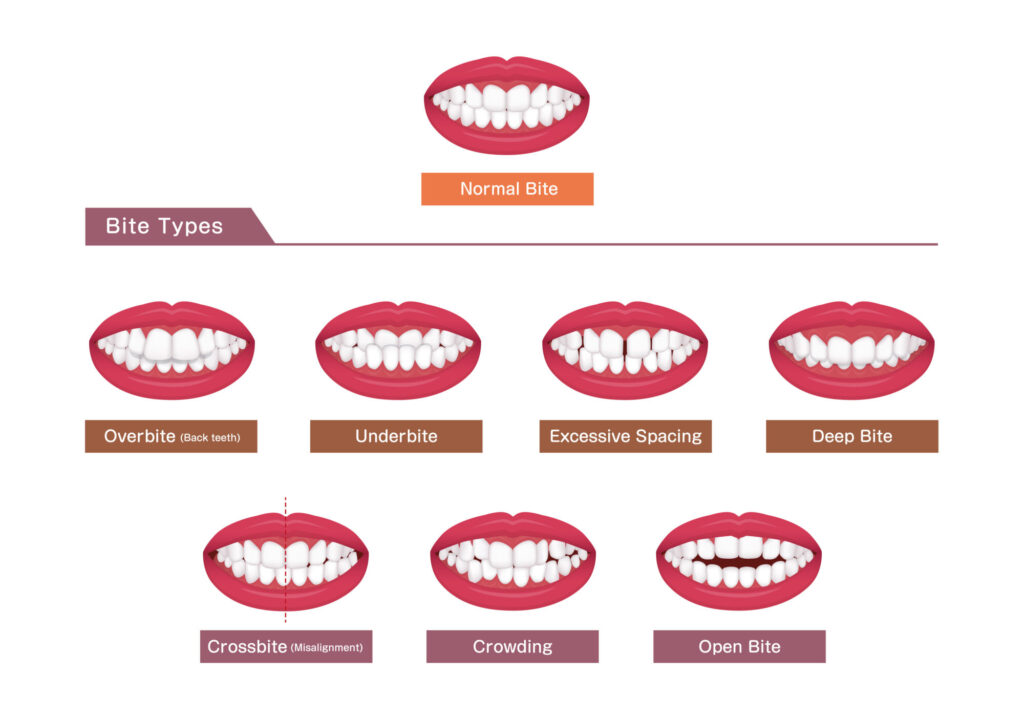
A temporary anchorage device, sometimes referred to as a TAD, is a small, screw-like device placed on the gumline to aid in orthodontic treatment. It is most commonly used for teeth straightening via metal braces.
Orthodontic patients with complex orthodontic issues may require a temporary anchorage device (TAD) during their treatment for optimal results. In many cases, an orthodontist can use a patient’s natural teeth for the leverage needed to reposition teeth efficiently. However, other patients may require additional support in order to maneuver certain teeth into straighter positions. In these cases, an anchor must be installed so that the orthodontist can connect bands to braces and carry on with treatment as intended.
How Do Temporary Anchorage Devices Work?
In brace-based orthodontic treatment, an orthodontist will use brackets, bands, and wires to apply constant tension to teeth so that they can shift into proper or more ideal alignment. In many cases, an orthodontist can rely only on the brackets installed on the teeth to achieve the desired results. In other cases, the orthodontist may need a little more leverage via a temporary anchorage device.
The anchor allows the orthodontist to apply adequate tension to a tooth or the jaw so that either will shift into proper alignment or a better placement. Using either bracket ligature bands or small rubber bands, the orthodontist will attach the anchor to either a bracket or another anchor point in the mouth to achieve the necessary tension the patient needs for ideal correction.
What Does a Temporary Anchorage Device Look Like?
A temporary anchorage device has a similar appearance to a small earring stud or a small screw. They can range in length from 6 to 12 millimeters, are made of titanium alloy, and look like a screw with either a rounded or flat head.
Where Are Temporary Anchorage Devices Installed?
A temporary anchorage device can be installed along the upper or lower gum line to help adjust a tooth on the top or bottom row. Some patients may only require one anchor to be installed, while other patients may need multiple anchors for optimal treatment.
In the majority of cases, these anchors are installed on the outer gums. However, there are cases where a patient requires an anchor to be installed on the roof of the mouth.
What Conditions Can Temporary Anchorage Devices Help Correct?
Orthodontists may require patients with more complex orthodontic issues to receive a temporary anchorage device as part of their treatment plan. Conditions a patient may have that TAD placement can help correct include:
- Overbite
- Underbite
- Deep bite
- Crossbite
- Open bite
- Overjet
- Tooth gaps
- Crowding
- Abnormal tooth eruption

How Are Temporary Anchorage Devices Placed?
Temporary anchorage device placement is a minor oral surgery procedure that orthodontists or general dentists cannot perform; it requires care from a skilled oral and maxillofacial surgeon.
The placement process typically occurs in three stages:
- Pre-placement consultation
- Placement
- Removal
Consultation
During the consultation, the oral surgeon will evaluate the patient’s gumline and jaw to determine where placement should go. They will also be in close contact with the patient’s orthodontist to ensure placement meets the orthodontist’s requirements.
Surgery
Placement surgery is typically quick, with minimal pain involved. During the placement surgery, the surgeon will apply a local anesthetic to the area for numbing purposes. They will then install the anchor into the gumline and jawbone for secure placement. In many cases, placement only takes a few minutes.
Patients may feel mild soreness throughout the day as the anesthesia wears off, but the pain should subside completely in 24-72 hours.
Removal
When orthodontic treatment is finished, or when it’s time to remove the temporary anchors, the surgeon will either apply another dose of local anesthesia or a numbing cream to the area before removing the anchor. Similar to placement, removal is typically a fast and easy process.
A patient may experience minor pain following removal, but it typically fades over the course of the day or the next few days.
How Do You Care for a Temporary Anchorage Device Once Installed?
Just like it’s important to care for teeth and braces, it’s important to also take care of the temporary anchor. Brushing teeth and gums with bacteria-targeting toothpaste and rinsing with a bacteria-killing mouthwash are both important steps to proper anchor care.
When You Need Temporary Anchorages Devices for Your Orthodontic Care, Turn to Athens Oral Surgery Center.
Dr. Tomlinson and our team offer temporary anchorage device placement procedures that are quick, easy, and as pain-free as possible.
Talk to us about anchorage placement or other orthodontic surgery solutions we can provide: 706-549-5033
Related Articles:
